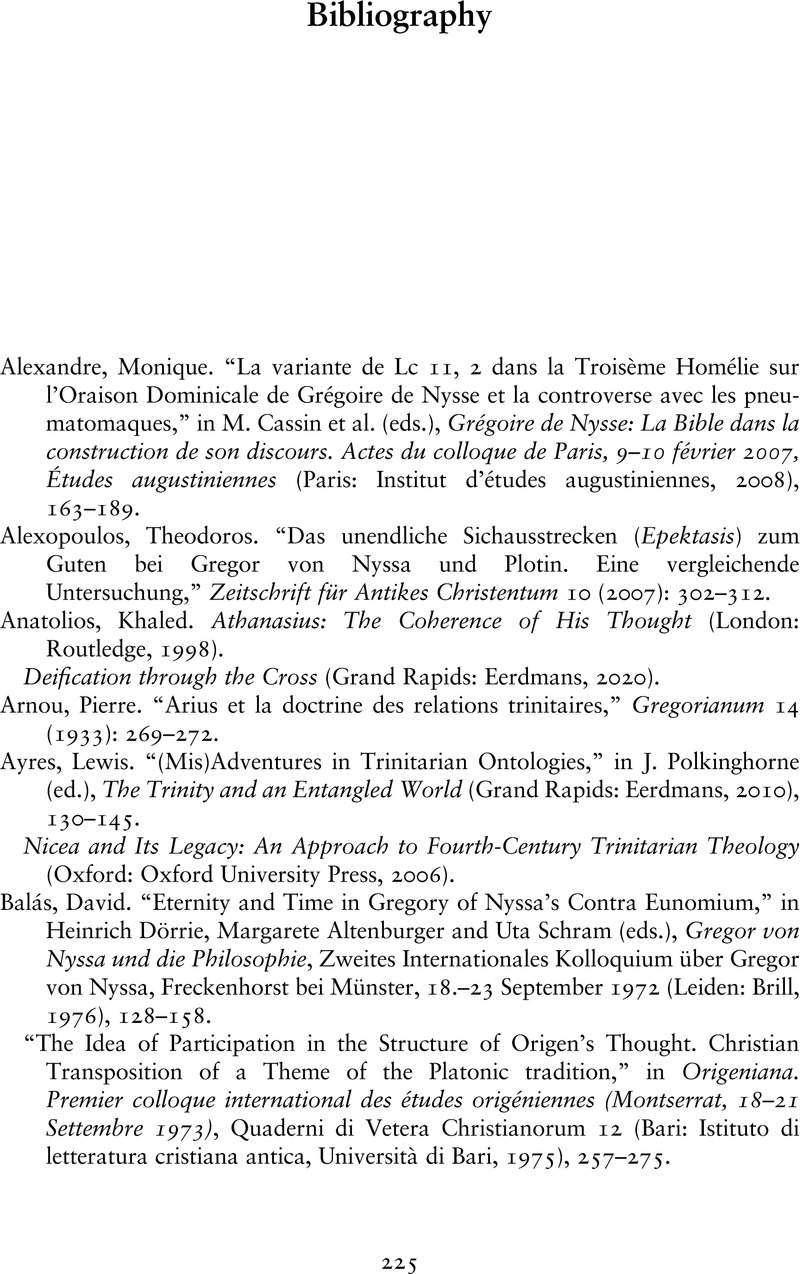Book contents
- The Cappadocian Reshaping of Metaphysics
- The Cappadocian Reshaping of Metaphysics
- Copyright page
- Contents
- 1 Introduction
- 2 Rational Logos
- 3 Relational Logos
- 4 Life from Life
- 5 Philosophical Relation in History
- 6 The Cappadocian Reshaping
- 7 Knowledge and Relation
- 8 Epistemology and Openness
- 9 Conclusions
- Bibliography
- Index
- References
Bibliography
Published online by Cambridge University Press: 11 January 2024
- The Cappadocian Reshaping of Metaphysics
- The Cappadocian Reshaping of Metaphysics
- Copyright page
- Contents
- 1 Introduction
- 2 Rational Logos
- 3 Relational Logos
- 4 Life from Life
- 5 Philosophical Relation in History
- 6 The Cappadocian Reshaping
- 7 Knowledge and Relation
- 8 Epistemology and Openness
- 9 Conclusions
- Bibliography
- Index
- References
Summary

- Type
- Chapter
- Information
- The Cappadocian Reshaping of MetaphysicsRelational Being, pp. 225 - 236Publisher: Cambridge University PressPrint publication year: 2023

